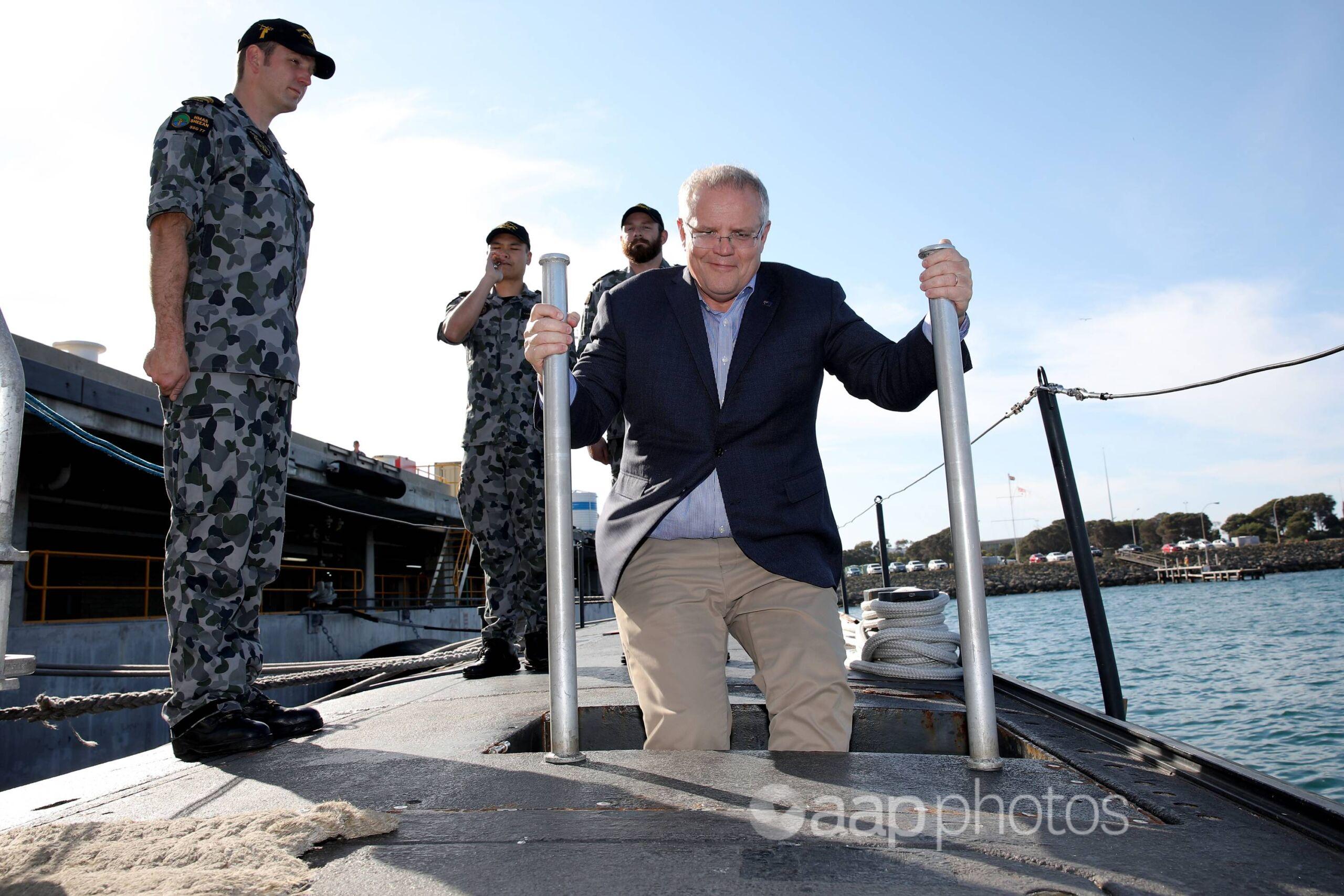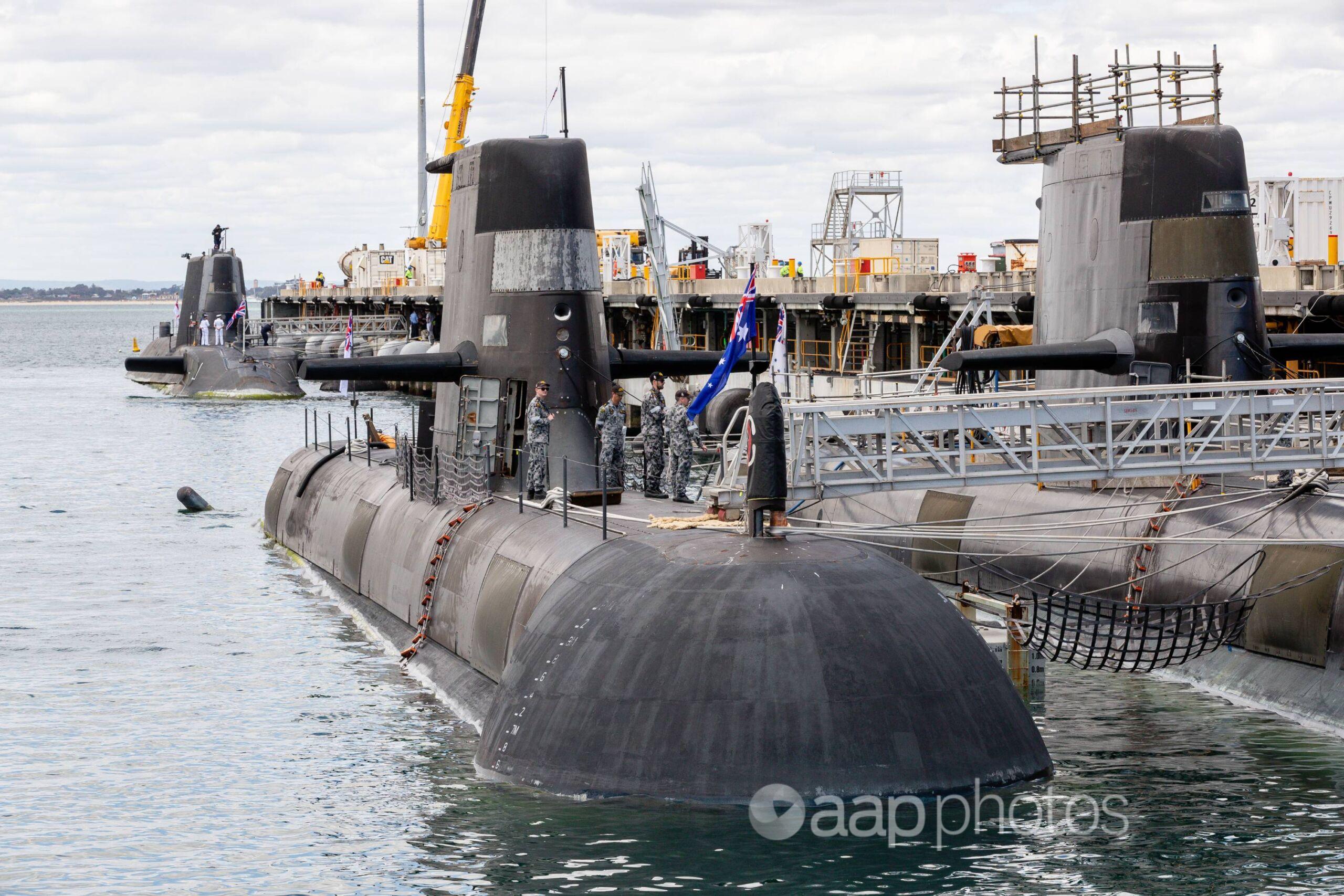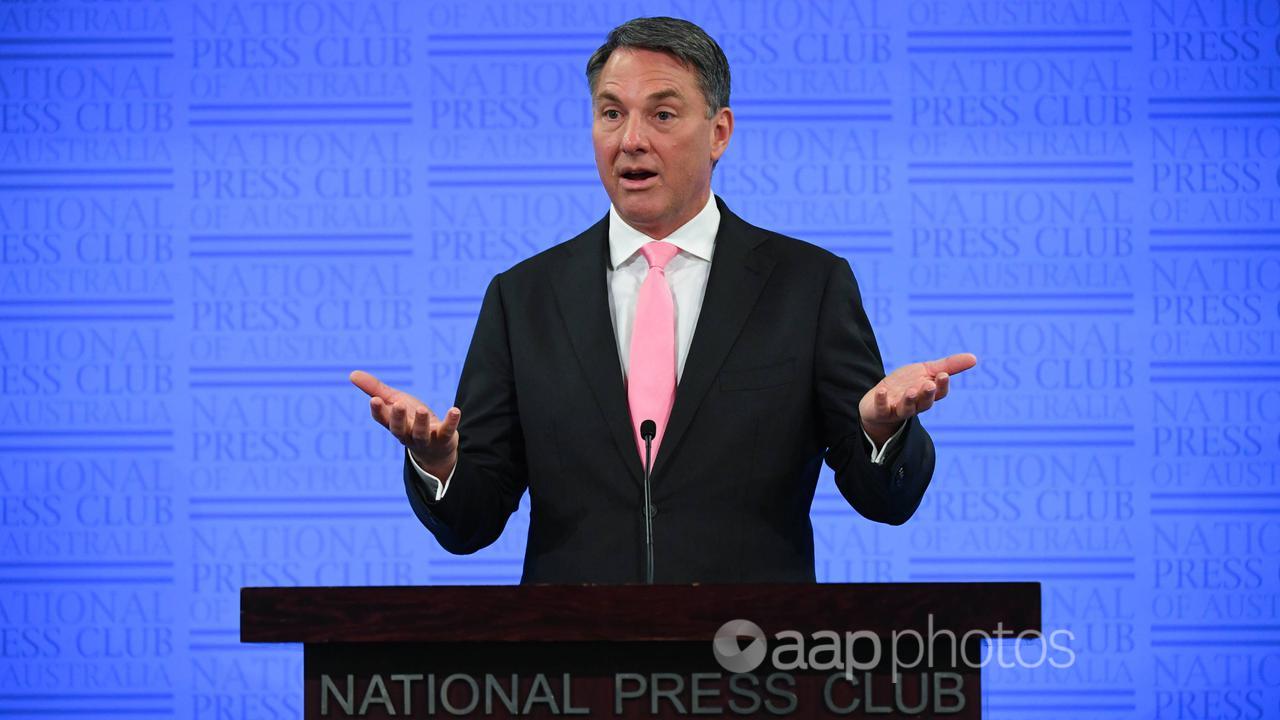Defence Minister Richard Marles has attempted to shift blame for Australia’s looming submarine capability gap onto the previous government by claiming that when the coalition came to power in 2013, new submarines were scheduled for delivery in the mid-2020s.
The claim is partly true but also misleading in parts. Australia’s 2012 Defence Capability Plan said new submarines were scheduled to be operational by 2025/26 or 2026/27.
However, defence experts told AAP FactCheck the mid-2020s delivery date was never realistic. This was in part due to delays under the Gillard/Rudd Labor governments prior to the 2013 federal election.
Mr Marles made the claim during a radio interview on ABC RN breakfast on June 29.
“People need to understand that when the former government came to power in 2013 it was expected that we would have a successor submarine to Collins in the mid-20s, in the next couple of years. Their inaction, their failures, their bungles, effectively opened up a 20-year capability gap,” he said.

When contacted for the basis of Mr Marles’ claim, a Defence spokeswoman pointed AAP FactCheck to comments made in 2015 by then defence minister, Kevin Andrews who said the submarines “must be delivered in time to avoid a capability gap in the mid-2020s when the Collins Class submarine is scheduled to be retired from service.”
The 2009 Defence White Paper, published by Kevin Rudd’s Labor government, outlined the department’s plans to replace Australia’s ageing Collins class fleet of submarines with 12 next-generation “Future Submarines” (page 70).
Defence expert Dr Marcus Hellyer, who works as a senior analyst at the Australian Strategic Policy Institute (ASPI), told AAP FactCheck that the 2009 white paper did not explicitly set a timeline but the broad understanding within the defence community was that a new fleet would be in the water by 2025, when the Collins fleet was due to begin being phased out.
“There couldn’t be (a firm date) because we didn’t know what boat we were going to build. Rather it was a broad intent to get the first boat by around 2025,” Dr Hellyer said in an email.
While the white paper does not specify a definitive timeline it does give a “mid-2030s” date by which time it states Australia will have a “heavier and more potent maritime force” which will include “double the size of the submarine force (12 more capable boats to replace the current fleet of six Collins class submarines)” (page 64).
A parliamentary library briefing dated May 24, 2012, 16 months before the coalition came to power, referenced the white paper’s mid-2030s estimate, noting the Labor government had attracted criticism “for delaying key decision points”.
“This has led to speculation that there will be a significant capability gap in Australia’s submarine force,” the briefing continued.
A month earlier, in April 2012, an ASPI report determined that “a capability gap is inevitable sometime in the late 2020s, and a period of no submarine capability at all is possible.”
It found that delays in the procurement process would result in “a shortfall in nominal submarine numbers compared to the current fleet of six boats from 2022 (when HMAS Collins reaches the end of its second eight‑year operating cycle) through until 2033 – a decade long ‘capability gap’, in defence parlance.”
In 2012, Defence identified four possible replacement options: an existing submarine design, an existing design with modified combat systems, an updated Collins design (also referred to as ‘Son of Collins‘) or a brand new design.
According to the 2012 Defence Capability Plan, published in May, the new submarines were scheduled to reach ‘initial operational capability’ by financial year 2025/26 to 2026/27 (page 206).
However, Dr Hellyer said getting new submarines up-and-running by then always seemed an unrealistic expectation.
“In hindsight, that date (2025) was probably only achievable if, after the 2009 White Paper, the government had either immediately committed to a Son of Collins design or immediately conducted a competition for a new design,” he said.

“Even then it would have been tight for a new design.”
According to Dr Hellyer, by the time the coalition gained power in 2013, the Labor government had shelved the first two options but had yet to start a competition for an actual design.
Dr Hellyer told AAP FactCheck: “At that time (2013) you’re only 12 years away and it’s pretty hard to go through the design process and put it into service. So I would say by that point the schedule was pretty ambitious and I would say unachievable.”
John Blaxland, professor of international security and intelligence studies at ANU, also told AAP FactCheck the mid-2020s timeline was unrealistic.
“The 2013 Defence White Paper deliberately avoids specifying when the submarines would be ready, but the mid-2020s was never seriously considered to be a realistic time frame,” Prof Blaxland said in an email.
In 2016, the government agreed to buy 12 submarines from French shipbuilder Naval Group. However, former prime minister Scott Morrison scrapped the $90 billion contract in 2021 in favour of the AUKUS partnership.
In June 2022, Mr Marles warned that production delays meant the submarines are unlikely to be operational before the 2040s.
Prof Blaxland said “neither side of politics is blameless” when it comes to the delay.
“The coalition fumbled and procrastinated, but the Rudd-Gillard governments did as well,” he said.
The Verdict
Mr Marles is only partly correct with his claim that in 2013 it was expected Australia would have a replacement for its Collins-class submarines by the mid-2020s.
Defence papers from before the 2013 election set a target delivery date for the new submarines of 2025/26 or 2026/27. However, experts told AAP FactCheck that delays under the previous Labor government had already set into the procurement process and, by the time of the 2013 election, the mid-2020s was an unrealistic time frame.
Mixture – The claim includes accurate information but also significant errors or problems.
* AAP FactCheck is an accredited member of the International Fact-Checking Network. To keep up with our latest fact checks, follow us on Facebook, Twitter and Instagram.
All information, text and images included on the AAP Websites is for personal use only and may not be re-written, copied, re-sold or re-distributed, framed, linked, shared onto social media or otherwise used whether for compensation of any kind or not, unless you have the prior written permission of AAP. For more information, please refer to our standard terms and conditions.


















